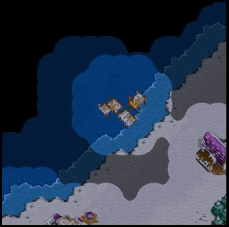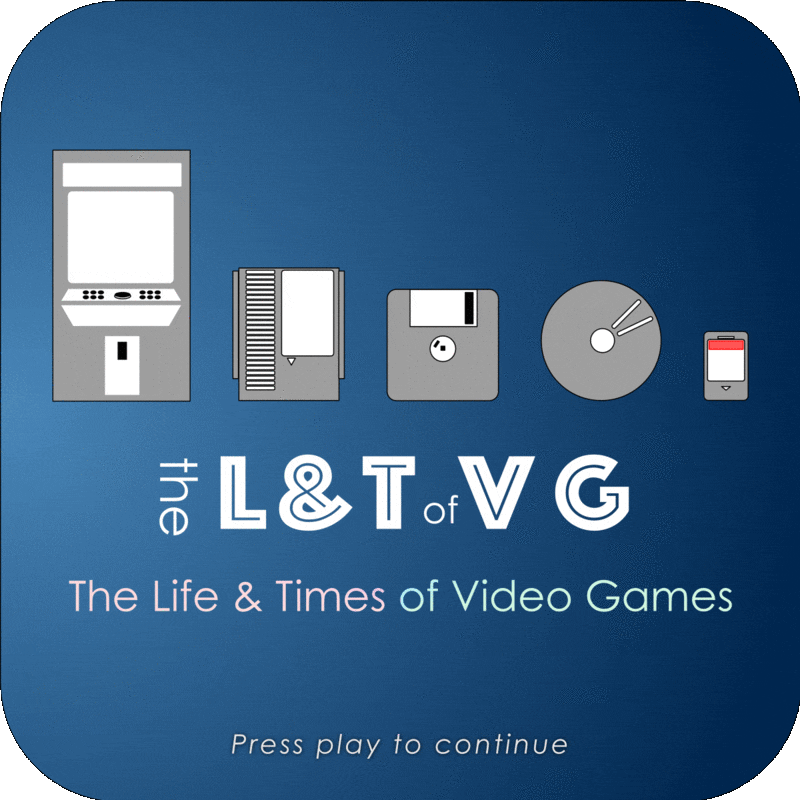23 - The Fog of War

Hence the term, the fog of war, a military phrase with origins in the musings of a 19th century Prussian general called Carl von Clausewitz. A phrase that’s since found its way into video game lexicon, and video game design, as we explore here. (Featuring interview clips with former Blizzard lead programmer Patrick Wyatt about the fog of war in Warcraft II and StarCraft.)
Thanks as always to my supporters on Patreon — especially my $10+ backers Vivek Mohan, Simon Moss, Wade Tregaskis, Eric Zocher, and Seth Robinson. If you'd like to become a supporter, for as little as $1 a month, head to my Patreon page and sign up. Or for one-off donations you can use paypal.me/mossrc.
I've also recently added a third way that you can donate to the show — a premium, ad-free feed on Breaker, where you'll get all the bonus audio that goes to Patreon (but none of the non-audio Patreon perks) for a monthly subscription of US$2.99. Head to https://www.breaker.audio/the-life-and-times-of-video-games-premium for more info.
Please remember to tell other people about the show, and to leave a review by following the links at ratethispodcast.com/ltvg.
My book, The Secret History of Mac Gaming, is available in bookstores in the UK and Australia, as well as online from the likes of Book Depository and Amazon. See the official website for more info.
(Partial) Transcript
In war, no information is complete. No intelligence absolute. No view of the enemy unobstructed. There’s no such thing as perfect knowledge. It is a realm of uncertainty, where decisions are made on flawed and often outdated data — as though looking through a fog.Hence the term, the fog of war, a military phrase with origins in the musings of a 19th century Prussian general called Carl von Clausewitz. A phrase that’s since found its way into video game lexicon, and video game design, as I’ll be exploring in this story.
No war occurs without this so-called “fog” shroud around it, so of course it follows then that any attempt to simulate war would model either the fog of war or its effects on both sides. And indeed, decades before we had a video game industry, tabletop wargames had begun to grapple with the fog of war problem.
Some games offered ways for players to hide their troop placements from opponents. In Stratego, for instance, each player has 40 pieces with rank varying from 1 to 9, and these ranks are displayed only on one side of the piece — the side facing you, its owner, so your opponent only knows a piece’s rank once they’ve encountered it in battle.
Other games, known as block wargames, adopted a similar solution by putting numbers and pictures on different sides of wooden blocks, while more elaborate approaches involved using duplicate boards separated by a screen of some kind. That way each player will know only as much about their opponents’ forces as their opponent has revealed to them up to that point. So sort of like the game of Battleship, but with much more complex rules and movesets.
But most tabletop wargames simply left the fog of war out entirely, preferring instead to focus on the aspects of warfare that translated better to a game played by a group of people seated around a table.
Then computers came along, and suddenly game makers had the perfect vessel for simulating the fog of war — especially when pitting the player against the computer or against other players connected over a network. Because now, with the computer as referee or timekeeper or dungeon master or whatever, there was an easy way to conceal information from a player.
And almost immediately, at the dawn of the computer age, a Caltech student called Walter Bright created Empire on a PDP-10 minicomputer. As an aside, here’s a fun bit of trivia about Empire that will be of little surprise to long-time listeners to the show: for many months in the late 1970s, Empire was also known as “test”, so-named in order to circumvent restrictions on the amount of time students could spend playing games.
Anyway, Empire defined the basic concept of fog war for video games, as we know it today. Which is that at the beginning of play, you can see only the area immediately surrounding whichever characters and buildings you control. Everything else is blacked out. If you think of the Civilization series and just imagine much simpler graphics, you’d be pretty close to how Empire looked. You had a randomly-generated map of the world, drawn in squares on a grid, and as you built units you could explore this world — pushing back the blackness to reveal the map. Once you had visibility of something, though, you could see it permanently — so the fog of war only really applied as an initial state, to represent the unknown territory on a map.
1980 Atari 2600 game Adventure is an important game to mention here, too — this is the famous game by Warren Robinett, with the easter egg room that inspired Ready Player One. Adventure was essentially a game of maze exploration, and to make that experience more interesting, Warren leveraged a video prioritisation programming trick in the Atari’s hardware design. He put an object between the foreground and background — both of which had been set to the same colour. His trick created a large orange square around the player’s (also square) avatar in the rooms that were meant to be dark.
(I say “meant to” because in Adventure you couldn’t really tell for sure what anything was or wasn’t — but suffice to say the idea was to replicate the experience of walking around with a lamp in a text adventure game, and so in a dark room you’d see only your avatar in that square of “radiance”, plus any other objects on the screen, and everything else would be grey, thereby hiding your path.)
Now, you might be wondering what this has to do with the fog of war. Adventure is not a wargame. How can it have a fog of war?
Well, if we think about fog of war as a game mechanic, and not just an analogy for limited information in the theatre of war, then there’s really no reason why it should be the sole dominion of the wargame. Uncertainty in games is interesting. It leads to interesting decisions. It makes people take more risks. It forces them to think, and it entices them to explore.
And as such, I’d argue that one of the most influential uses of the fog of war mechanic also came from around this time I’ve just been talking about — the late 1970s and early 1980s. In Rogue, the game that birthed the roguelike — the popular genre that’s managed to hybridise its way into every other genre, like some kind of super virus.
Rogue was designed to give you an experience like what its creators Michael Toy and Glenn Wichman had felt when they played the mainframe text-based game Colossal Cave Adventure for the first time. They wanted players to encounter mystery and danger on every playthrough, each time wandering through a unique subterranean maze, and so their ASCII graphics game Rogue would, much like Empire, begin with a mostly-black screen and fill in the details as you explored.
Similarly with Beneath Apple Manor, a 1978 Apple II roguelike that predated Rogue, and in Gammaquest II, an unreleased Rogue-like game that also was developed before Rogue and that would later be released as Sword of Fargoal for the Commodore VIC-20 personal computer. Here, developer Jeff McCord even used the phrase ‘fog of war’ to describe the way his randomly-generated levels would reveal themselves inch by inch as players explored them.
This would become a touchstone of this genre that we now call roguelike — an integral part of the DNA of influential games like NetHack and Moria and Ancient Domains of Mystery, where discovery and exploration are cardinal elements, inseparable from the genre’s fierce commitment to providing tension and excitement on every playthrough.
In 1984 PC game Carrier Force, this idea of tension took centre stage. Carrier Force was a simulation of World War II carrier battles, which in reality were rife with misinformation and uncertainty as rival powers struggled for control of the Pacific — searching for an edge over the enemy through barely-legible radar data and the observations of pilots. Developer Gary Grigsby called his carrier warfare game “about as foggy as a game could get,” for it involved sending planes out in search of enemy targets — which they may or may not see, depending on the weather conditions, as well as their distance from home, and no small measure of random chance. And so you could never quite know for sure if you were about to get hit by an enemy raid from a ship that you’d failed to spot, or if you or your enemy would even succeed in finding a single target during an attempted raid.
Before long, the computer wargaming community was abuzz with discussion about something they called “limited intelligence” — which was really just another phrase for this fog of war thing, only less poetic. It had begun to pop up everywhere, and not everyone was on board with the idea.
(For more, including the tale of how Warcraft II got its two-tiered fog of war system, and how the fog of war continued its march deeper into the industry, you'll have to either just listen to the episode or sign up as a supporter on Patreon — everyone who pledges $3 or more a month gets access to full episode transcripts [amongst other things].)


